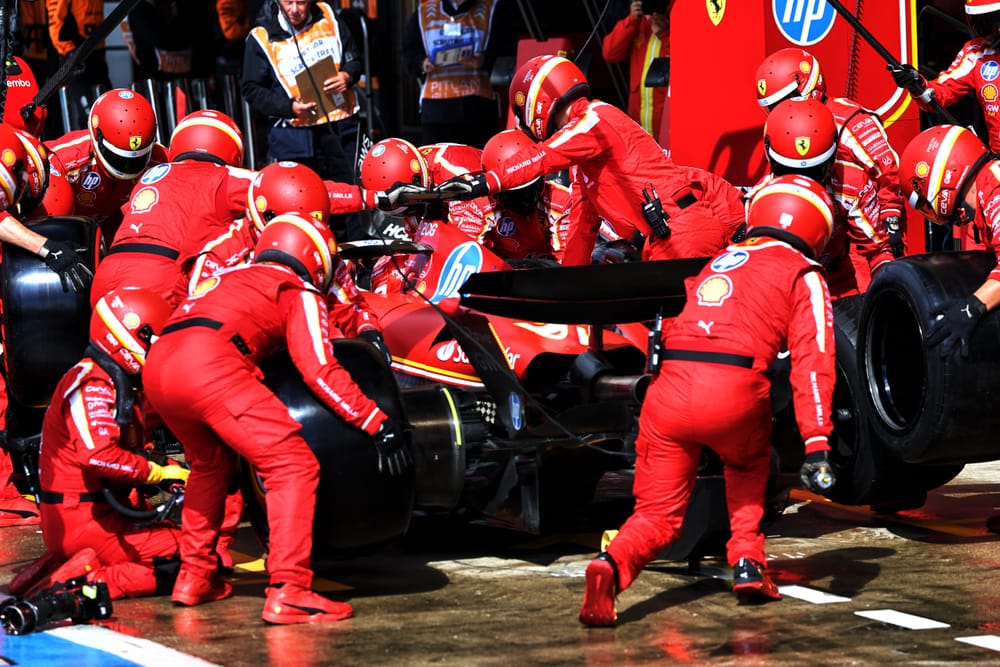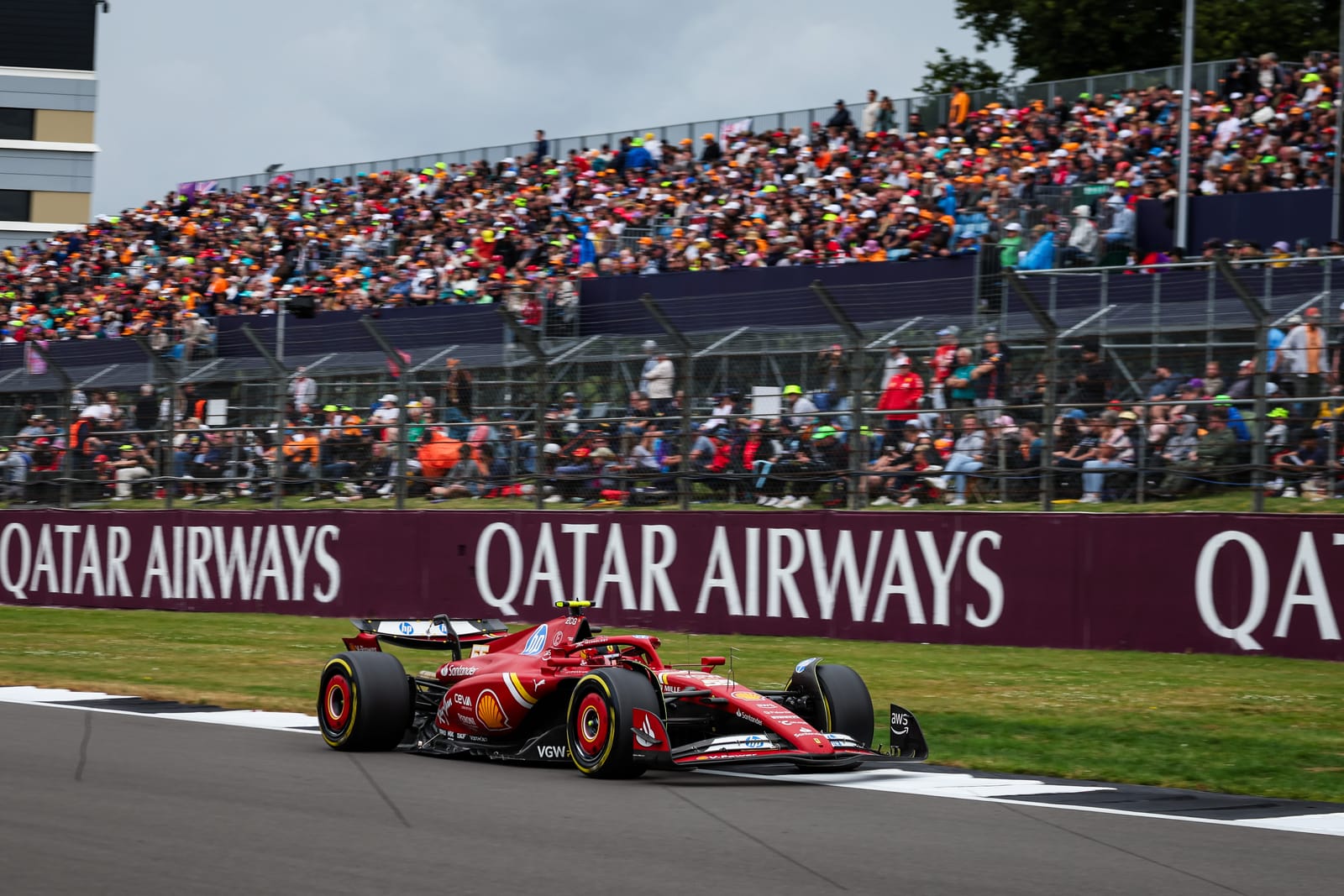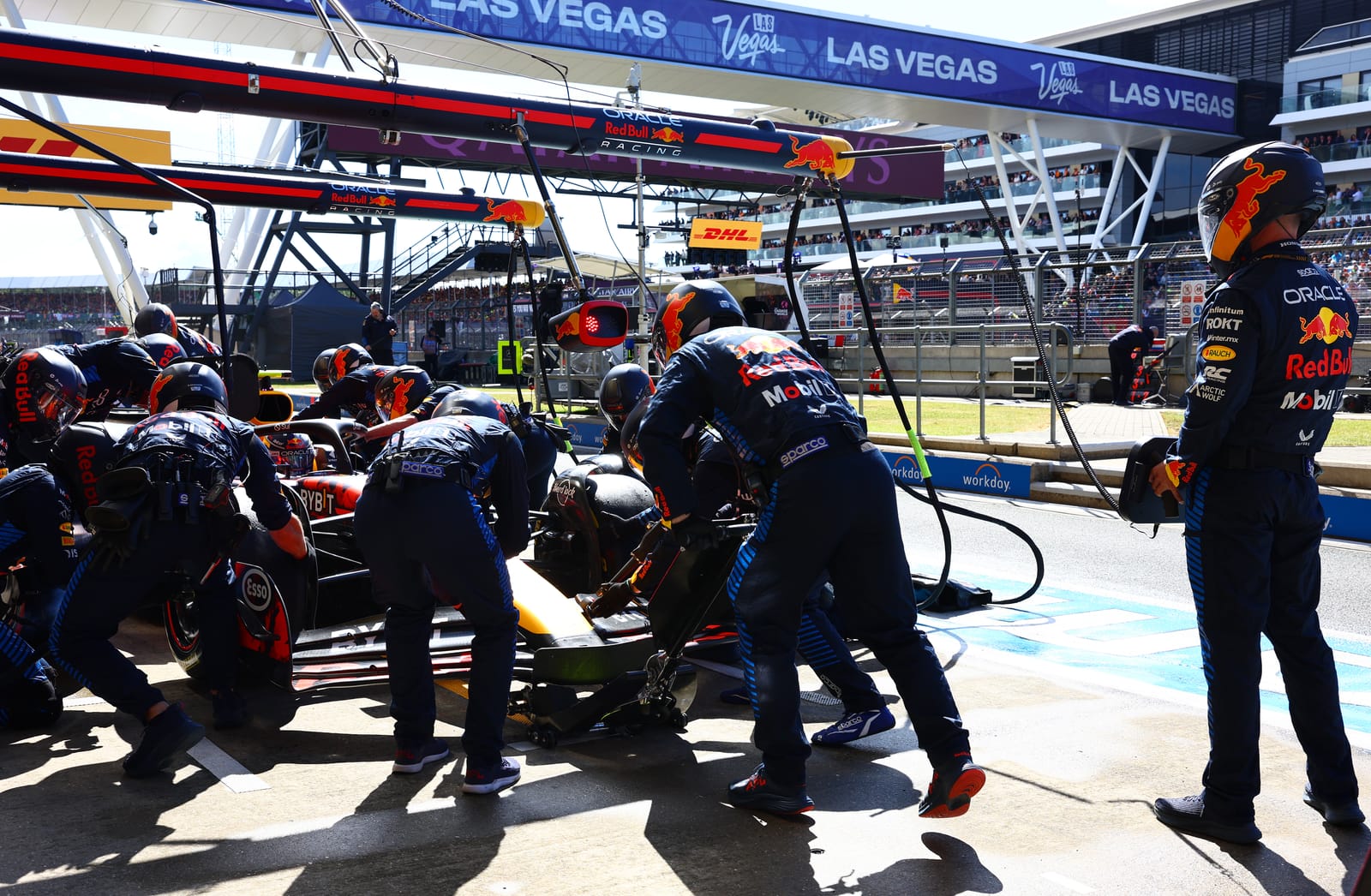Up Next

Ferrari's historical reputation for nonsensical Formula 1 judgment calls was only boosted by an embarrassingly doomed tyre gamble at the British Grand Prix that ensured Charles Leclerc's miserable run of form continued.
Leclerc's scored just 12 points since his emotional first home race win in Monaco at the end of May and the latest nightmare race that's led to that measly tally might be the most painful yet.
Leclerc initially made good progress early on to recover from the Q2 exit that left him 11th on the grid. He made up three places on the opening lap before getting stuck behind Lance Stroll's Aston Martin.
He cleared Stroll on lap 13 to move into seventh and while he was initially within five seconds of his team-mate Carlos Sainz, Leclerc dropped to almost 15 seconds adrift in just six laps.
Ferrari says Leclerc dropping back from Sainz was why it then became the only top 10 runner to opt for intermediate as early as lap 19, Red Bull also brought Sergio Perez in as did Alpine with Esteban Ocon and Sauber with Zhou Guanyu - but all three were well outside the points at the time.
How it unfolded over the radio
Lap 16 - Leclerc is told "we expect heavy rain now. It's going to happen soon". He's then told "this heavy rain should last another two to three laps, then stop. Then another heavy rain."
Lap 17 - Leclerc is told that Turn 15 [Stowe] is wet and that "the leader's still staying out".
Lap 18 - He is told "this should last another three or four laps". Also told slicks are still quicker. Later in the lap he's warned "heavy rain in the pitlane, class two to three". He's told there's another 10 minutes of rain. Near the end of the lap Leclerc says over the radio "get ready" (but this is to tee up for the next lap as it's very late in the lap).
Lap 19 - Leclerc is told "we expect this to be the heaviest 10 minutes like this". Leclerc says "box" while in the first sector. Leclerc then says approaching Becketts "wait a second before boxing because part of the track is fully dry still". But there's a reasonable amount of rain through that sequence that on the Hangar Straight he does a final "box box". He pits end of lap 19 to take intermediates.
100 seconds slower
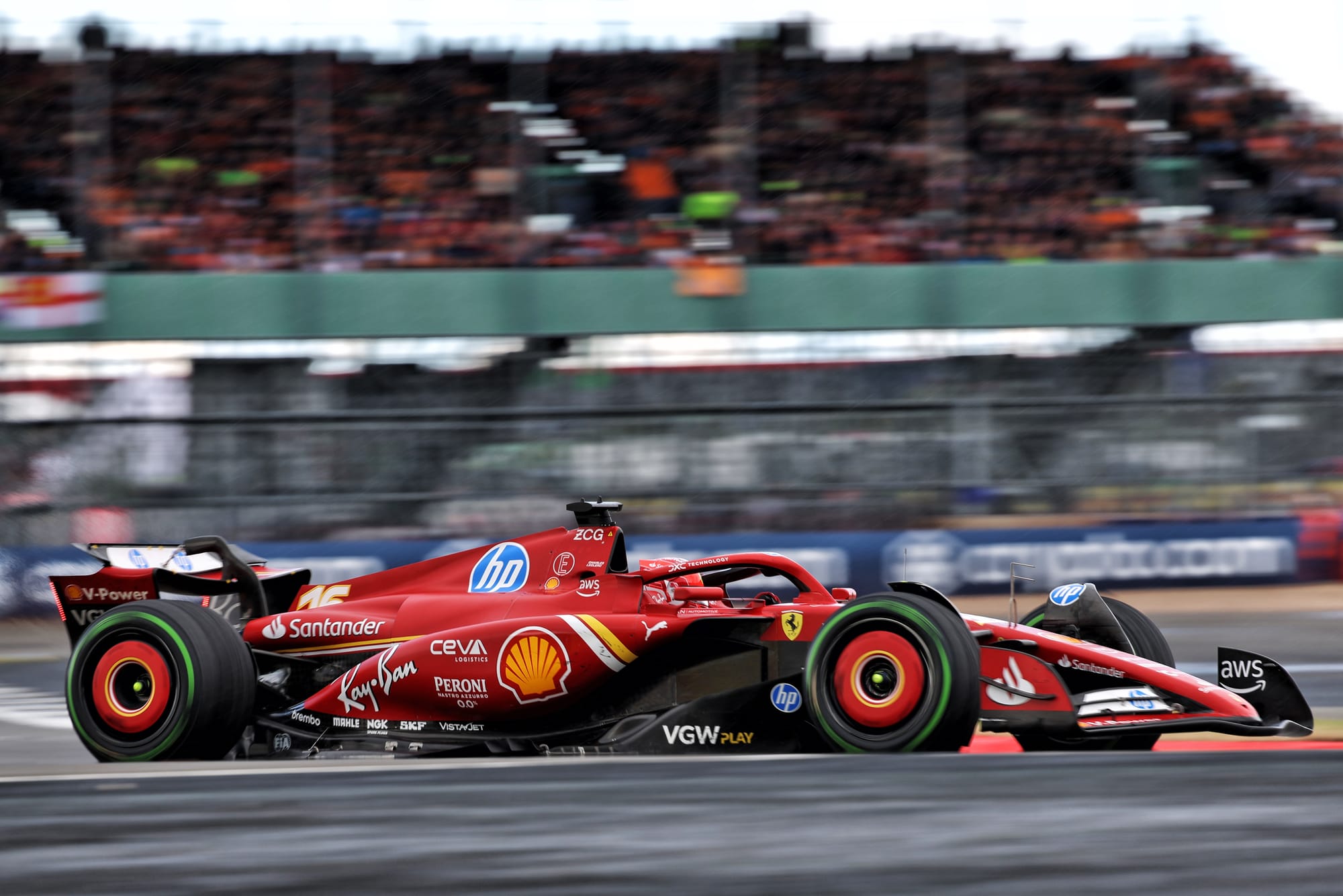
Leclerc was an average of 13.797s slower than Sainz during lap 21 to 26 when Leclerc was on the inters and Sainz was on the mediums he started the race on.
By the time intermediates were the right tyre to be on (around lap 26 when Sainz pitted for interest), Leclerc had overheated his intermediates in the laps before and any advantage was neutered.
In fact he had to pit for a new set of inters on lap 27 anyway and lost further time while being lapped. At the end of his outlap, he was 114.555s behind Sainz, having been 14.755s behind Sainz before his initial pitstop meaning he lost 100 seconds to the gamble.
From there, Leclerc had zero chance of scoring points and only finished ahead of the Saubers and fellow gamblers Ocon and Perez.
Ferrari's logic
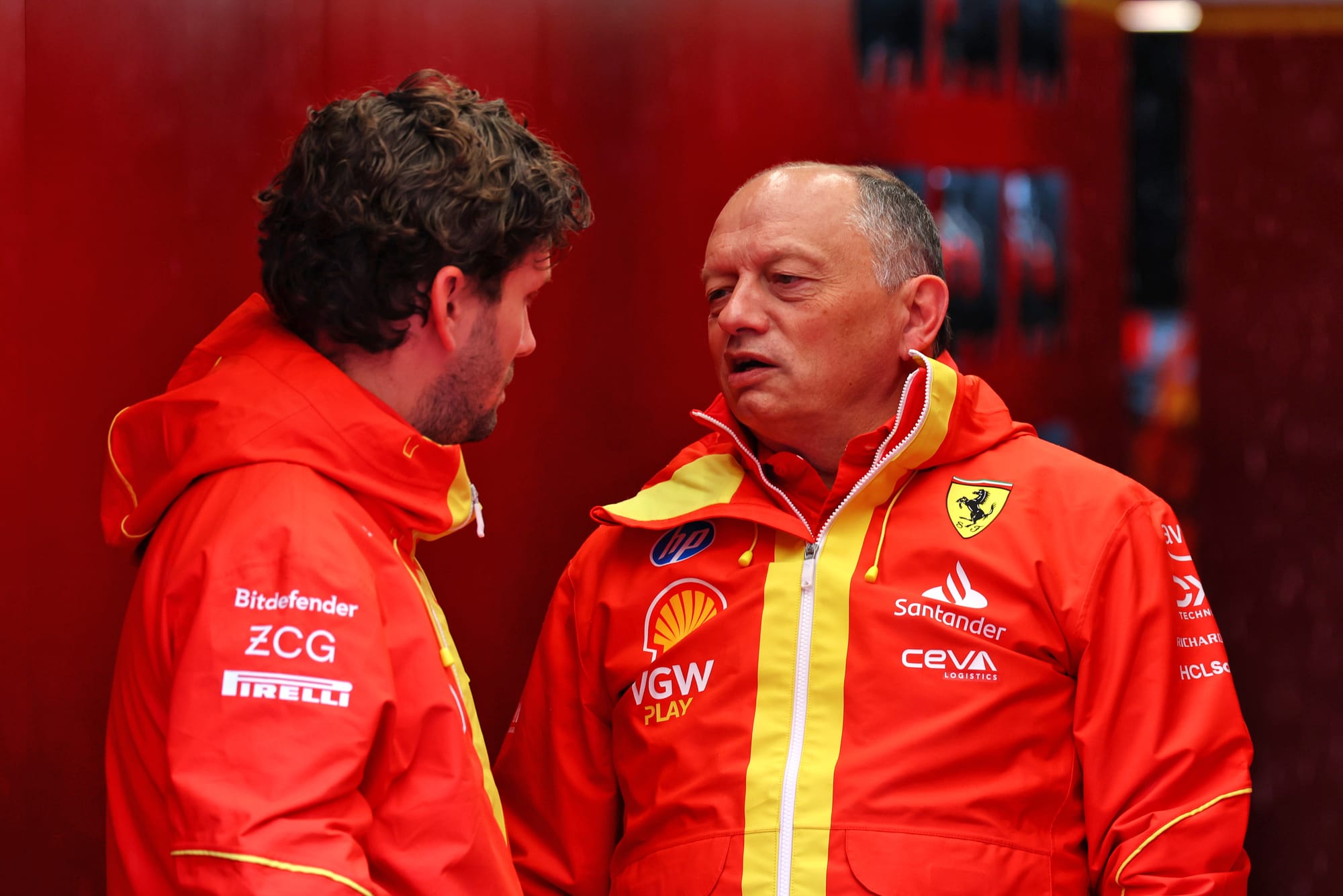
Team boss Fred Vasseur believed it was a risk worth taking considering Ferrari had an almost zero chance of a podium without some strategy gambling, with a car that was clearly adrift of the Mercedes, McLaren and Red Bull at Silverstone aside from the first stint where Sainz was able close in on Max Verstappen before the Red Bull leapt well out of reach following the switch to inters.
"We are giving them information and we are proposing the call. The fact is that at one stage you have to pit and they have to do the last call," Vassuer said when asked whose decision it was.
"On this situation, and I discussed it with Charles, for sure we can be disappointed when you see the result at the end. But first it's clear that it was not the right call, or the right decision, but I would say that it's also motivated by the fact that at this stage we are already 15 seconds behind Carlos. It means that consciously or unconsciously you know that the only way to come back to fight for the podium is to be a bit aggressive in the decision.
"It's not the right call because I think he would have finished P6 but collectively we took this decision. I don't want to say it's a good one because the reality is that it's not a good one, but I'm not upset with this because if you have a look, the same lap Hamilton went wide in Turn 1, Russell went wide in Turn 1, another car went wide in Turn 15.
"It was really on the edge to become the very good call and when you are in the situation to be in the group of the leaders, you will never take this risk, you will copy the others and that's what Carlos did."
Vassuer's right that you have to gamble sometimes but Ferrari's gamble was one that only made sense if Leclerc was well outside the points. Instead it threw away banking a decent points haul on a strategy that probably had a 1% chance of working.
If other teams were as optimistic as Ferrari's weather radar there's no way Leclerc would have been the only driver in the top 12 to gamble.
It's particularly painful when Ferrari has been haemorrhaging points to McLaren (and now Mercedes) over the last few weekends. It had a chance to secure some decent damage limitation by smartly settling for fifth and sixth.
Aston Martin didn't have a car to challenge for the podium on pure pace either, but you didn't see that team throwing away a double points finish for a long shot podium.
'Clearly the wrong one'
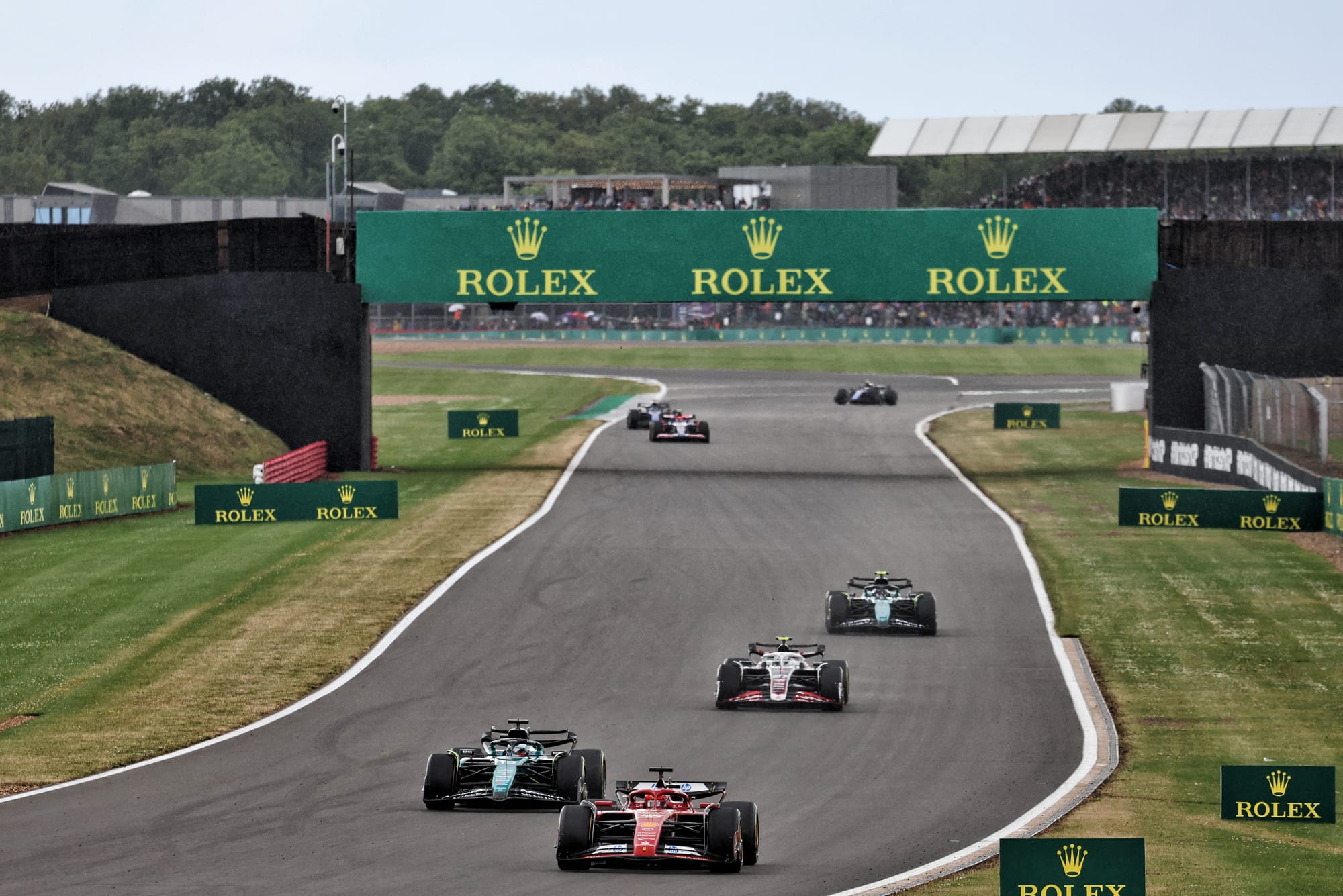
Leclerc was less than impressed after the race, calling the last four races “worse than a nightmare".
He admitted the strategy was "clearly the wrong one" but said he acted on the information that Ferrari gave him.
"I’ll look back into it with the decision, with the message I got and the info I had it felt like it was the right one, it was raining a lot," Leclerc explained.
"I was told the rain was going to be heavy so I stopped to anticipate, but the rain came eight/nine laps later, so that was obviously the end of our race.
"It's very frustrating, another weekend to forget and it starts to be a lot."
It could be easy to conclude this was a case of Leclerc not having that wider race management that Sainz is often praised for - i.e his ability to question and prevent a questionable Ferrari strategy gamble from taking place.
But as Vasseur explained, Sainz's position on track - he was catching Verstappen and had less reason to gamble - ultimately meant he didn't face the same choice. It's impossible to know if he'd have reacted any differently given the same dilemma. Leclerc's hesitation on the lap he pitted shows he was ready to challenge the decision too.
For his part Sainz says he thought all the Sunday strategy calls on his side were spot on, having collected plenty of crossover data during Friday's running in mixed conditions.
The problem for him was the car wasn't quick enough so even with the perfect calls fifth was the best he could do. And it's that lack of pace - and the reverting both cars back to a pre-Spanish GP upgrade specification - that's the bigger concern.
But this embarrassing strategy gamble - seemingly built on wrong weather information and a far too ambitious outlook on when it's right to make an audacious gamble - is an unnecessary addition to a miserable run of form.


